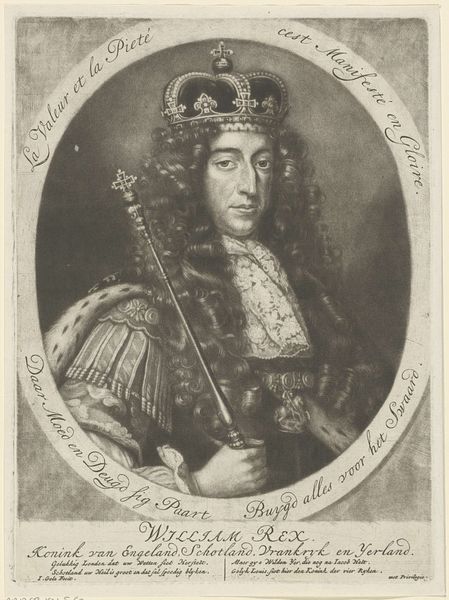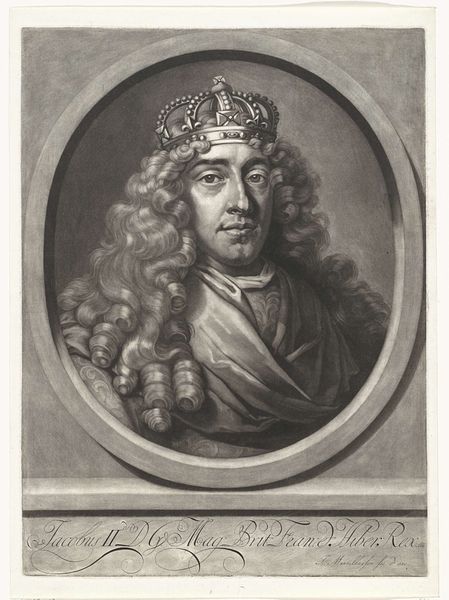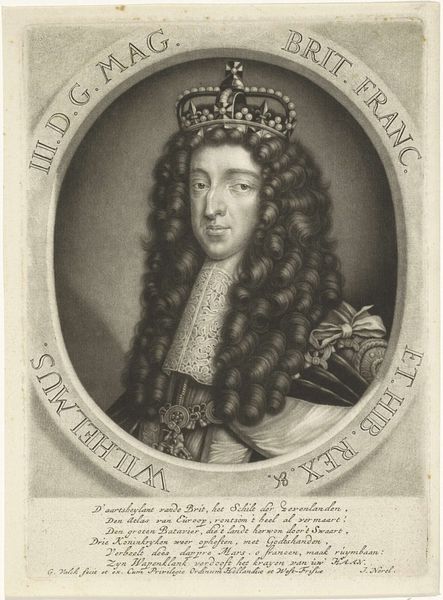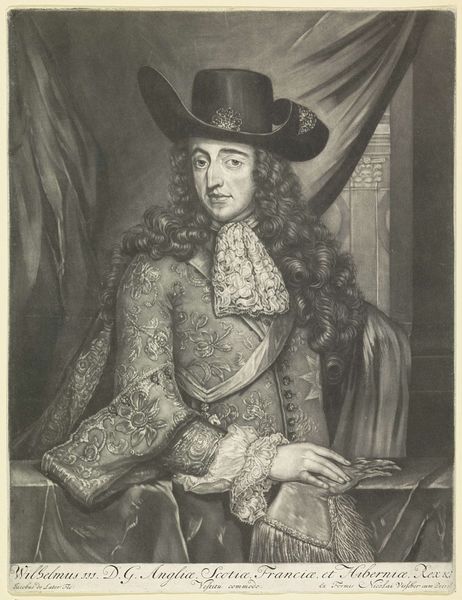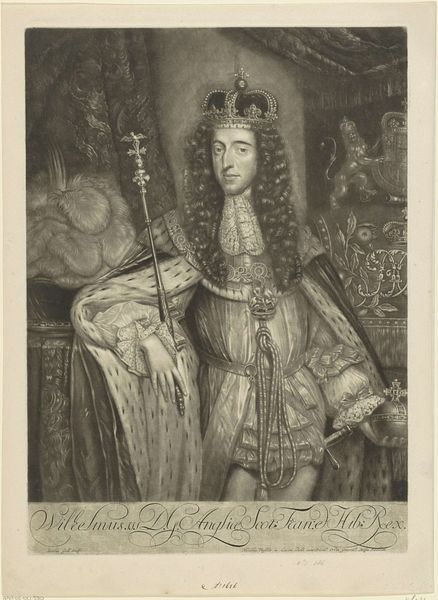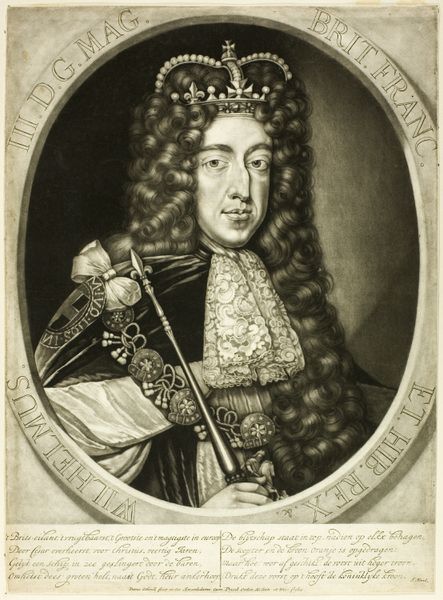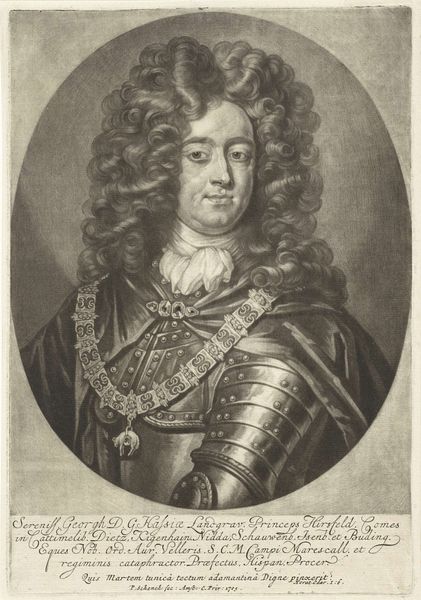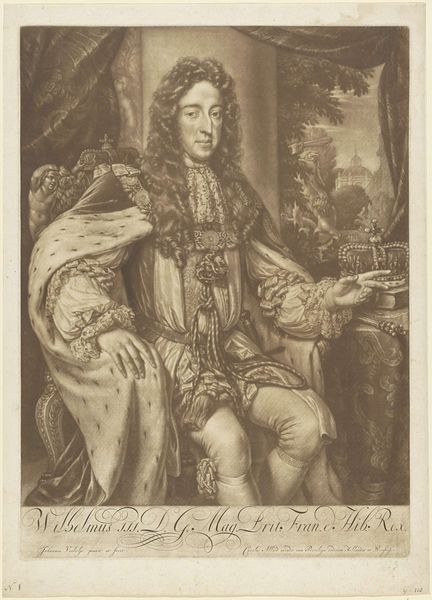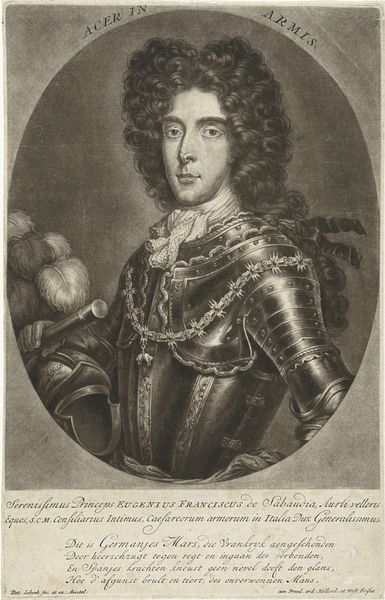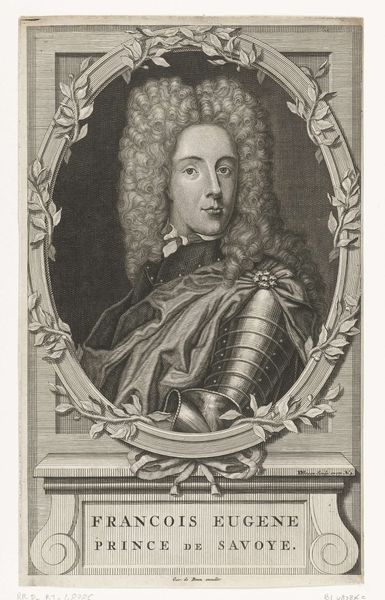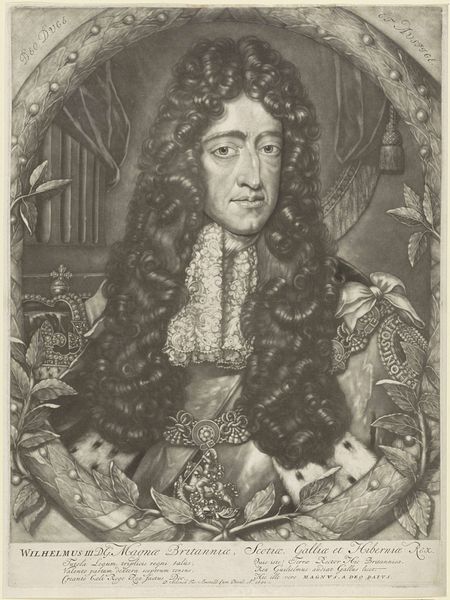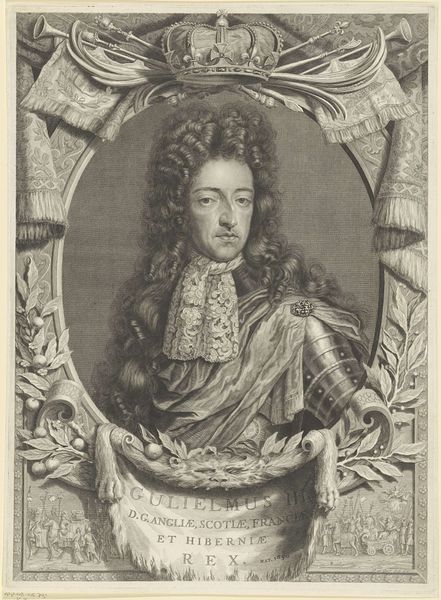
print, engraving
#
portrait
#
baroque
#
dutch-golden-age
# print
#
old engraving style
#
history-painting
#
engraving
Dimensions: height 256 mm, width 189 mm
Copyright: Rijks Museum: Open Domain
Curator: This is Jacob Gole's portrait of Willem III, Prince of Orange, dating sometime between 1688 and 1724. It's an engraving, showcasing the prince in his full regal attire. Editor: It's quite striking. All that dark etching gives it such a serious and frankly opulent feel, but in a very controlled manner, a typical sign of the Baroque aesthetic. Curator: Indeed. Consider the sheer skill and labor involved in producing an engraving like this. The repetitive actions required to create the intricate lines and textures – each etched into a metal plate, inked, and then pressed onto paper. The materiality of ink, paper, and metal plate, and the craft involved, speak volumes about the value placed on representation. Editor: And representation for whom, right? Context is vital here. This isn't just an image of a ruler, it’s an articulation of power deeply entwined with issues of identity and authority. The wig, the crown, even the scepter – all these are designed to project a certain image. Let's not forget William's complicated role in British history and the complex narratives that arise from colonization, and resistance, when viewing art of this period. Curator: Precisely. The crown and royal garb clearly symbolize power and the means of governance but let's delve deeper into the craftsmanship. Consider the production networks involved, from the paper mill to the workshops crafting his garments, the raw materials to finished state: Dutch linen, English wool, precious metals, gemstones. All interconnected threads woven into a display of authority. Editor: Absolutely. Power isn’t simply declared; it's performed. Gole's portrait allows us to deconstruct these performances and reveal the assumptions around legitimacy that still operate today. The symbolism extends to understanding the very circulation of these prints and who had access to such material representations of authority and its place within a broader landscape of visual propaganda. Curator: It is an impressive display of the technical ability required of engravers during the Dutch Golden Age. Editor: I concur; it compels us to delve beneath surface appearances. I leave contemplating not just Willem III's image, but how that image functions, still. Curator: Exactly, and understanding the economic drivers of artistic patronage and the intricate systems supporting this kind of work.
Comments
No comments
Be the first to comment and join the conversation on the ultimate creative platform.
